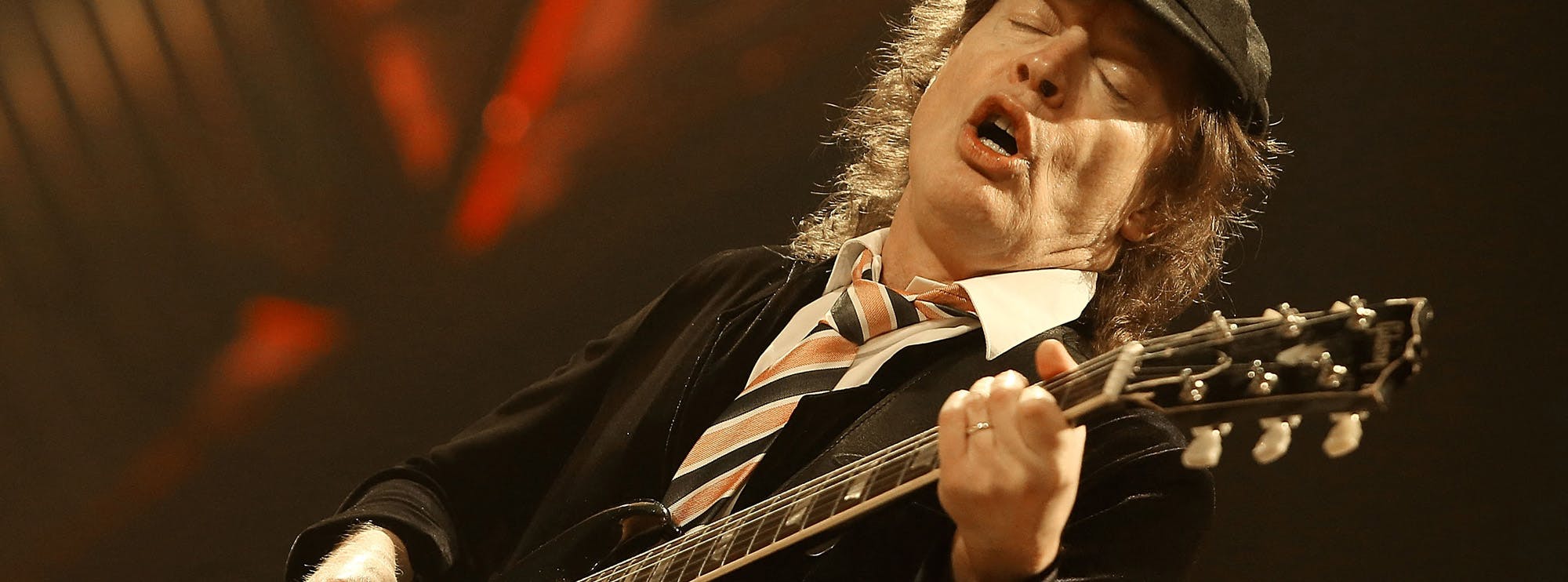"Kicked in the Teeth" by AC/DC: A Guitarist's Guide
If you're a fan of classic rock and love the gritty, bluesy, and hard-hitting guitar style of AC/DC, then "Kicked in the Teeth" from their album 'Powerage' is a must-learn for any aspiring rock guitarist. Danny Gill delves into the chords, scales, guitar solo, and the lead guitarist's playing style in this iconic song.
Chords and Structure
"Kicked in the Teeth" follows a straightforward rock structure with a bluesy edge. The primary chords used in the song are:
- A5 (A power chord)
- D5 (D power chord)
- G5 (G power chord)
- C5 (C power chord)
- E5 (E power chord)
- F5 (F power chord)
The main riff is built around these power chords, and it creates a driving, aggressive rhythm that's typical of AC/DC's signature sound. The progression follows a classic I-IV-V pattern common in blues and rock music, which gives the song its timeless appeal.
The song's structure consists of a verse-chorus-verse-chorus-bridge-chorus pattern, and it's this simplicity that makes it an excellent choice for guitarists looking to master the fundamentals of rock and blues-based songwriting.
Guitar Scales
While the rhythm guitar work in "Kicked in the Teeth" is relatively straightforward, Angus Young's lead guitar work injects a dose of bluesy energy into the song. The scales that Angus Young often relies on include:
- A Blues Scale: The A Blues scale (A-C-D-Eb-E-G) is the backbone of many of Angus Young's signature licks and solos. It's a staple in blues and rock, and it adds that essential bluesy flavor to his playing.
- A Minor Pentatonic Scale: Angus frequently incorporates the A minor pentatonic scale (A-C-D-E-G) into his solos. This scale is versatile and widely used in rock music, and it allows for expressive bending and vibrato techniques.
Guitar Solo Analysis
Now, let's dissect Angus Young's guitar solo in "Kicked in the Teeth." It's a blistering display of his signature style, characterised by high-energy bluesy licks, aggressive bends, and expressive vibrato. Here's a breakdown of some key elements:
- Bends and Vibrato: Angus Young's mastery of bends and vibrato is on full display in this solo. He uses both half-step and full-step bends to add emotion and tension to his phrases. The vibrato, often wide and fast, gives his notes that unmistakable AC/DC feel.
- Alternate Picking: Angus employs alternate picking for fast and precise note execution. This technique allows him to maintain the song's driving rhythm while delivering lightning-fast runs.
- Double Stop Bends: At several points in the solo, Angus uses double stops (playing two notes simultaneously) combined with bends. This creates a powerful and expressive sound that punctuates the solo's intensity.
- Unison Bends: Unison bends involve bending one note to match the pitch of another. Angus utilises this technique to create ear-catching harmonies during the solo.
- Pinched Harmonics: To add edge and bite to his notes, Angus incorporates pinched harmonics. These are achieved by lightly touching the string with the picking hand immediately after picking a note.
- Trills: Trills are rapid alternations between two notes. Angus uses trills effectively to inject a sense of urgency and excitement into the solo.
- Tremolo Picking: In certain sections, Angus employs tremolo picking, rapidly picking a single note to build intensity.
Angus Young's Playing Style
Angus Young is known for his unique playing style that combines the bluesy soulfulness of classic rock with the high-energy aggression of hard rock. His stage presence and signature schoolboy outfit are as iconic as his guitar playing. Here are some key aspects of his style:
- Stage Presence: Angus Young is a showman on stage. He's famous for his frenetic, high-energy performances, which often include his iconic duck walk and wild guitar antics.
- Minimalist Gear: Angus keeps his gear simple, typically using a Gibson SG guitar and a Marshall amplifier. His straightforward approach emphasises the importance of tone and technique over excessive effects.
- Blues Influence: Angus's playing is deeply rooted in the blues. His bending, vibrato, and choice of scales reflect this influence, adding a bluesy feel to AC/DC's hard rock sound.
- Signature Licks: Angus has created numerous memorable guitar licks and solos that have become part of rock history. These licks often combine elements of pentatonic scales, bending, and aggressive picking.
Guitar Techniques Used in "Kicked in the Teeth"
To sum up, "Kicked in the Teeth" by AC/DC is a masterclass in classic rock guitar techniques. Here's a list of techniques featured in the song, along with hyperlinks for further exploration:
- Vibrato
- Alternate Picking
- Bends
- Legato
- Double Stop Bends
- Unison Bends
- Pinched Harmonics
- Trills
- Tremolo Picking
- Power Chords
- Palm Muting
By mastering these techniques and studying Angus Young's playing in "Kicked in the Teeth," you can not only appreciate the song's brilliance but also add some of his iconic style to your own guitar playing repertoire. So, plug in your guitar, crank up your amp, and let the power of AC/DC's classic rock guide you on your guitar journey.
About The Tutor
Tutor Profile
Danny Gill
Danny Gill is, without a doubt, the most loved tutor by our community. With an incredible array of DVDs and web lessons for LickLibrary covering a wide variety of topics all of which he covers with incredible detail, it's no wonder he carries as much respect as he does. As...




